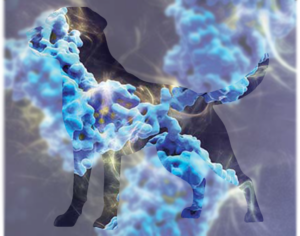
Every dog owner fears the day they might hear the word “cancer” from their vet. This devastating disease affects not only humans but our canine companions as well. Veterinary scientists and clinicians are now employing the same methods as researchers studying human cancer, bringing the tools of personalized cancer treatment and drug research and development to bear on canine cancer, and in the not-too-distant future the treatment for a dog’s cancer may become as personalized as the bond they share with their owner.
Developing and testing new drugs and therapies is crucial to improving cancer treatments for canines. One of the most powerful tools in the drug development toolbox is the bioassay. Bioassays enable scientists to measure the biological activity of a potential treatment compound to determine if it might be effective as a therapeutic agent. For researchers focused on advancing canine cancer therapies, bioassays are indispensable. They offer precise insights into how new drugs interact with cancer cells and the immune system.
Bioassays: A Powerful and Precise Tool in Canine Cancer Research
Bioassays are experiments that determine the potency, efficacy, and safety of a drug by observing its biological effects in controlled environments. In the context of canine cancer research, these assays help scientists understand how a potential treatment impacts cancer cells, whether it can stimulate the immune system to fight tumors, or if it targets specific molecular pathways involved in cancer progression. By providing quantitative data, bioassays allow researchers to make informed decisions about which drug candidates are worth pursuing in further studies.
Evaluating Potential Therapeutic Compounds
Potency is the concentration (EC50) or does (ED50) of a compound that is required to produce half of a compound’s maximum effect.
Efficacy (Emax) is the maximum effect of the drug. Higher doses do not lead to increased effects beyond this point.
Safety refers to detecting any off-target effects of the test compound to better understand any side effects and risks.
One of the primary uses of bioassays in canine cancer research is to evaluate the effectiveness of new drugs. For instance, before a drug is tested in clinical trials, it must first demonstrate its ability to kill cancer cells. Bioassays are designed to simulate the biological environment of cancer, enabling researchers to observe how well a drug inhibits tumor growth or induces cancer cell death.
Different types of bioassays are employed depending on the specific goals of the research. Cell viability assays, for example, measure the number of living cells after treatment with a drug, providing a direct assessment of its cytotoxic effects on cancer cells. Proliferation assays monitor how a drug affects the growth rate of cancer cells, which is crucial for understanding its potential to halt or slow tumor progression.
Understanding the Mechanisms of Action of Candidate Therapies
Beyond effectiveness, bioassays also help researchers gauge the biological activity of new drugs—how they interact with biological targets such as proteins, enzymes, or cellular receptors involved in cancer. Binding assays can determine whether a drug effectively binds to its intended target, while functional assays measure the downstream effects of this binding, such as the activation or inhibition of a signaling pathway that regulates cell survival or death.
For immunotherapies, cell-based reporter bioassays are particularly valuable in assessing how a drug modulates the immune system. Immune cell activation assays, for instance, can reveal whether a drug can enhance the ability of immune cells to recognize and attack cancer cells. This is especially important in the development of monoclonal antibodies, checkpoint inhibitors, and cancer vaccines, where the goal is to harness the animal’s immune defenses against cancer.
Tailoring the Treatments for Canine Cancer
One of the most exciting prospects of these bioassays in canine cancer research is their potential to guide individualized medicine. By identifying biomarkers—specific molecules that indicate how a particular cancer might respond to a treatment—bioassays allow the customization of therapies to individual dogs. This approach ensures that each dog receives the most effective treatment based on their unique biological makeup, leading to better outcomes and ultimately fewer side effects.
For example, biomarker assays can detect the presence of certain genetic mutations or protein expressions in a tumor, which may predict how well a particular drug will work. By incorporating these assays into the drug development process, researchers can identify the most promising candidates for further testing in dogs with specific cancer types or molecular profiles.
Summary
Bioassays are not just a research tool—they are a gateway to innovation in veterinary medicine. As we continue to push the boundaries of what’s possible in canine cancer treatment, the insights gained from bioassays will be instrumental in bringing new, life-saving therapies to fruition. By understanding the biological activity of new drugs and testing their effectiveness in controlled settings, we can ensure that only the most promising candidates move forward, leading to better outcomes for dogs diagnosed with cancer.
At Promega, we understand the fundamental role that bioassays play in the development of new cancer therapies. Our comprehensive suite of bioassay products is designed to support researchers in every stage of the drug discovery process. Explore our portfolio of bioassays for your drug discovery research needs.
Latest posts by Promega (see all)
- One Health and H5N1: Promega’s Commitment to Holistic Solutions - April 8, 2025
- Overcoming qPCR Inhibitors: Strategies for Reliable Quantification - March 13, 2025
- Celebrating Creativity and Innovation: The 2025 Promega Employee Art Showcase - February 4, 2025
